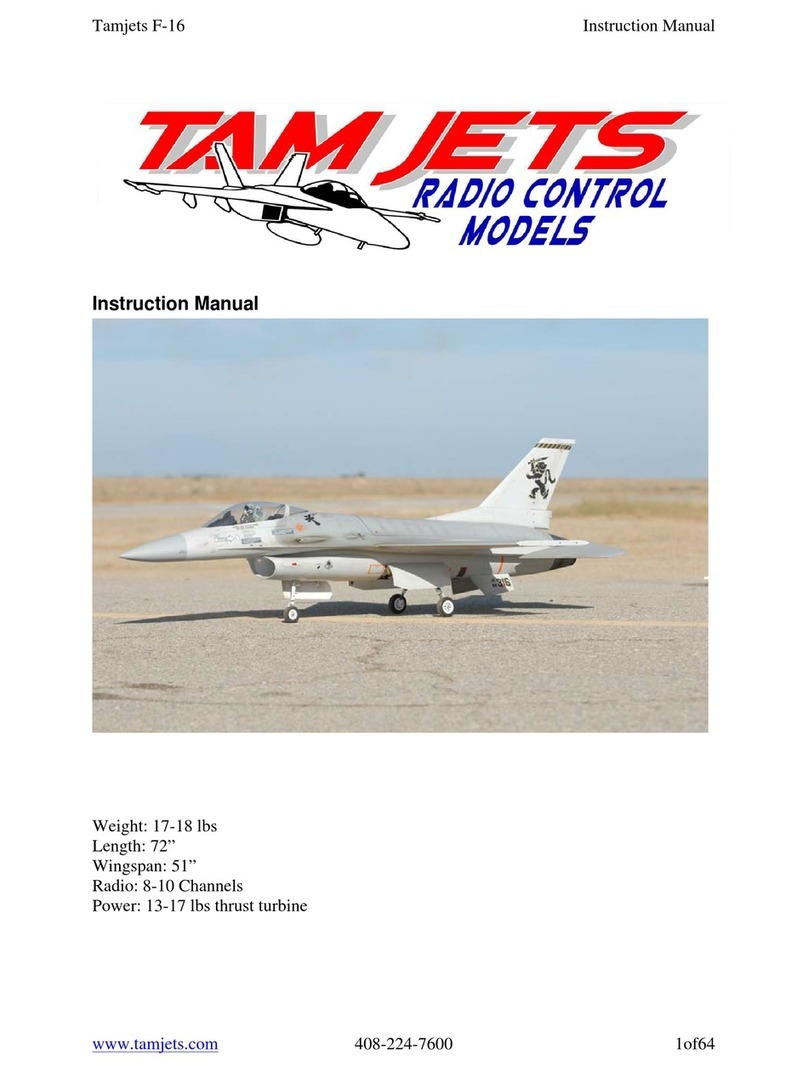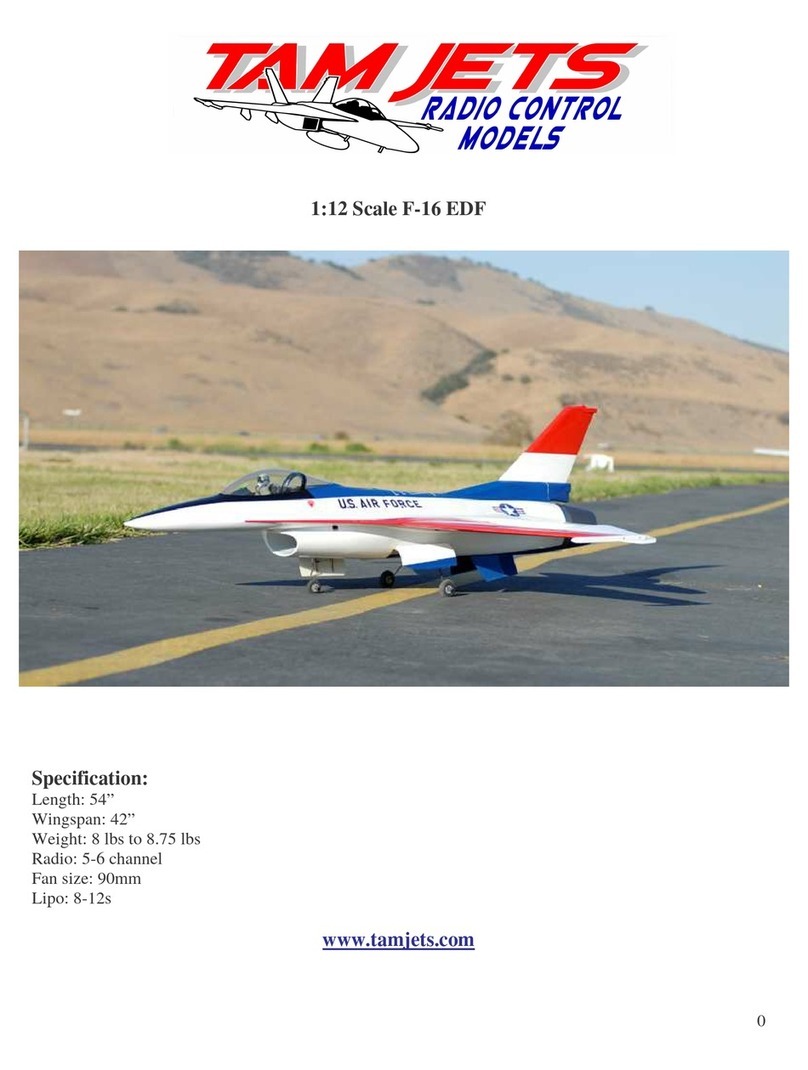
Alignment: Wing Incidence………………. 0 degr. To Thrust line
Wing Dihedral..……………….0 degr. (at trailing edge)
Horizontal Stab. Incidence…….0 degr. To Thrust line
Thrust-line ..……………..…….0 degr.
Radio Requirements:
8 Ch. Minimum Computer Radio
Ail, Elev, Flaps & Rudder servos………JR-3421 or equal.
Steering ………………….… 60-70 in./oz. Hi Torque Std.
Retract servo…...…..... Mini. 50 in./oz. OR Jetronic valve.
Center of Gravity: Located on the CENTERLINE of the FORWARD WING TUBE.
C.G. with gear down and UAT full.
Control Throws: Elevator…………… 3/4” Up and Down W/ 25% EXPO.
Ailerons……. …… 7/16” Up and Down W/ 25% EXPO.
Rudder.………………………………..1” Right and Left.
Flaps……………………………….1/2 flaps 1” Take off.
Flaps… Landing 1-7/8” mix 1/8” up Elevator and mix crow.
Crow Setup…Flap – 1-7/8” for Landing mixed with 3/16” UP
Aileron.
You will find the assembly to be straight forward provided that you follow these instruction
in the sequence as outlined. An assembly jig is now available from TAMJETS to aid in the
alignment of the wings to the fuselage ensuring proper wing and supporting bulkhead
alignment.
Adhesives:
The following information is provided as a guide for glues and structure fabrication.
CA+ or 15 Min Epoxy Tacking parts into place.
Aeropoxy (Hysol) Final gluing of all bulkheads etc. to Fiberglass.
Fiberglass preparation for gluing:
Thoroughly sand all areas with 60 grit paper where bulkheads and etc. will be mated to
the fiberglass. Wipe down this area with acetone or lacquer thinner.
Painting:
It is recommended that the entire airframe be completed and equipment installed
BEFORE painting is performed. Light sanding with a Medium 3M pad is needed before
application of primer.





























